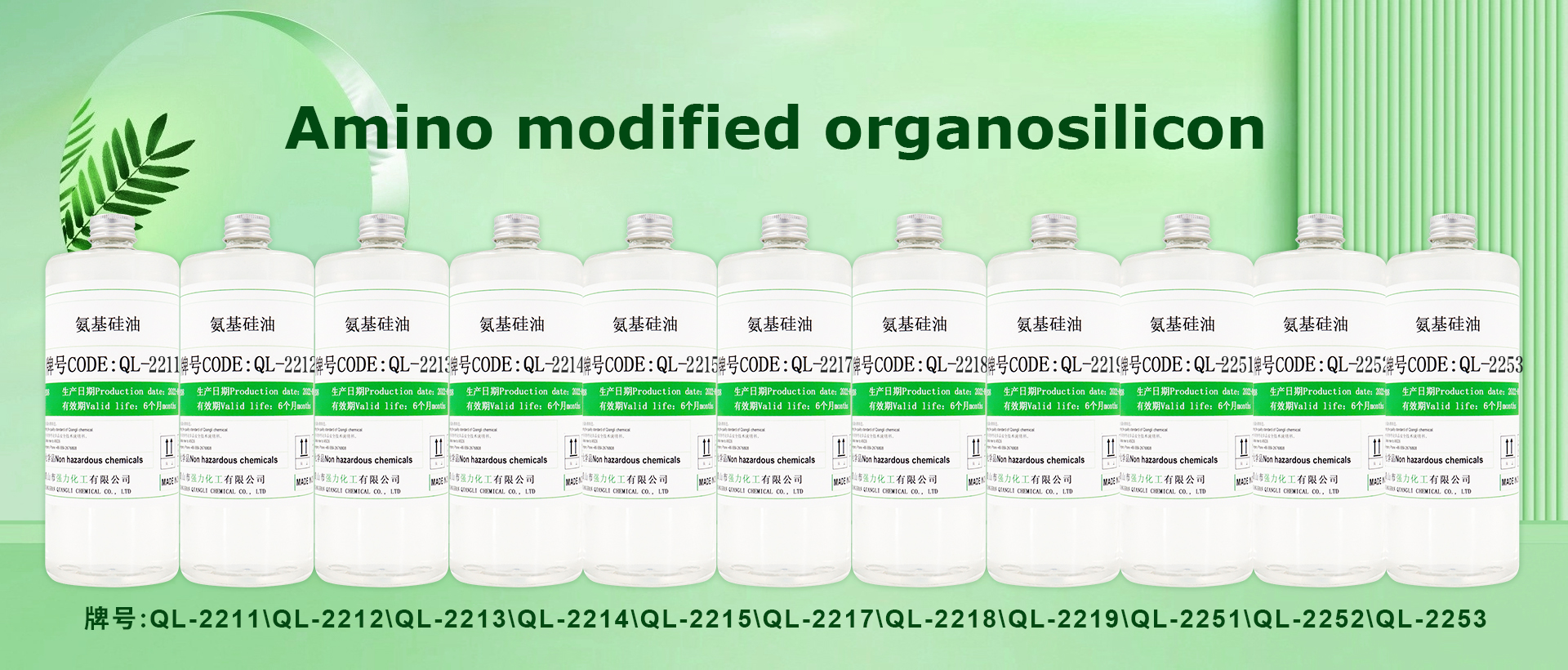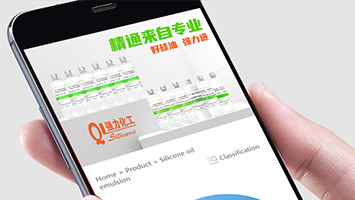The UV resistance, water resistance, and acid-alkali resistance of Amino-Terminated Polydimethylsiloxane (amino silicone oil) are closely related to its molecular structure, amine value (amino group content), and modification process. The following is a comprehensive analysis based on existing research and application practices:
I. UV Resistance
-
Basic Characteristics
Poly(dimethylsiloxane) (PDMS), the main chain of the compound, inherently exhibits good resistance to ultraviolet (UV) rays (especially UVA/UVB with a wavelength > 300 nm). This is because the Si-O bond in PDMS has a high bond energy (451 kJ/mol), and the methyl groups (-CH₃) in the helical structure of the main chain can shield ultraviolet rays. However, the presence of amino end groups (-NH₂ or -NHR) significantly increases the risk of yellowing.
- Amino groups are prone to oxidation under UV irradiation, generating chromophores (such as imines and quinones) that cause yellowing of the material. For example, amino silicone oil with an amine value > 0.6 mmol/g may have a yellowing index ΔE > 4 under high temperature or long-term UV exposure, while products with an amine value of 0.2-0.3 mmol/g can control ΔE within 1.5.
- Modification Optimization: Replacing primary amino groups (-NH₂) with tertiary amino groups (-NR₂) or incorporating phenyl groups into the molecular chain can significantly improve weather resistance. For instance, the oxidation potential of tertiary amino groups is 0.3V higher than that of primary amino groups, and phenyl groups can scavenge free radicals—enabling the material to maintain a ΔE < 3.0 after 40 hours of xenon lamp aging testing.
- Application Scenarios
- Textile Field: Amino silicone oil with a low amine value (0.2-0.3 mmol/g) is commonly used in high-end light-colored fabrics (e.g., silk, baby clothing) to balance softness and yellowing resistance.
- Leather and Coatings: Modified amino silicone oil (e.g., phenyl co-modified variants) can be used in outdoor coatings to extend service life.
II. Water Resistance
- Hydrophobic Mechanism
- Amino silicone oil inherits the hydrophobic properties of PDMS. The methyl groups (-CH₃) on the main chain are arranged outward, forming a hydrophobic layer with low surface energy (approximately 22 mN/m). This results in a water contact angle > 100° on the material surface.
- High-viscosity amino silicone oil (> 5,000 mPa·s) forms a continuous film on the material surface, which effectively prevents water penetration. For example, after film formation on denim, the contact angle exceeds 100°, and the wash resistance is excellent (residual rate > 85% after 20 washes).
- Hydrolytic Stability
- Acidic Environment: Under weakly acidic conditions (pH 4-6), amino groups are protonated (-NH₃⁺) and form electrostatic bonds with the negative charges on fiber surfaces, enhancing adsorption fastness. However, long-term immersion may cause hydrolysis of siloxane bonds.
- Alkaline Environment: Strong alkalis (pH > 8) can break siloxane bonds and trigger molecular chain rearrangement, leading to reduced material performance. For example, unmodified amino silicone oil films may crack after 168 hours of immersion in saturated Ca(OH)₂ solution.
- Modification Optimization: Methyl termination or the introduction of epoxy groups can improve hydrolytic stability. For instance, methoxy-terminated amino silicone oil has a 3-fold faster room-temperature self-crosslinking rate than hydroxyl-terminated variants, forming a more stable network structure.
- Application Scenarios
- Waterproof Coatings: When amino silicone oil is compounded with C6 waterproofing agents at a 1:1 ratio, the fabric contact angle can exceed 130° while maintaining a soft hand feel.
- Leather Treatment: High-viscosity amino silicone oil forms a hydrophobic barrier on leather surfaces, providing water and stain resistance without compromising breathability.
III. Acid-Alkali Resistance
- Chemical Stability
- Strong Acids and Alkalis: Long-term immersion of amino silicone oil in strong acids (e.g., 1% HCl) or strong alkalis (e.g., saturated Ca(OH)₂) can cause siloxane bond cleavage and amino group decomposition. For example, the viscosity of amino silicone oil decreases by more than 50% within 24 hours in solutions with pH 1 or pH 13.
- Weak Acids and Alkalis: Amino silicone oil exhibits good stability within the pH range of 4-8. For example, high-viscosity, low-amine-value amino silicone oil shows a viscosity change < 5% after 7 days of immersion in a solution containing 0.1% weak alkali.
- Modification Strategies
- Quaternization Treatment: Converting amino groups into quaternary ammonium salts (e.g., trimethylamine hydrochloride) can improve water solubility and acid-alkali resistance. For instance, quaternized amino silicone oil maintains good stability within the pH range of 2-10 and exhibits excellent antibacterial properties.
- Block Copolymerization: Incorporating polyether or carboxyl groups into the molecular chain can adjust the hydrophilic-hydrophobic balance of the material, enhancing its adaptability to complex environments.
- Application Limitations
- Amino silicone oil is not recommended for environments with long-term exposure to strong acids or alkalis (e.g., industrial acid pickling or alkali cleaning).
- In cosmetics and personal care products, amino silicone oil is typically used in formulations with pH 5-7 to avoid skin irritation.
IV. Summary and Recommendations
| Performance Dimension | Core Conclusion | Optimization Directions |
|---|---|---|
| UV Resistance | Amino groups are prone to oxidative yellowing; low amine value or modification (tertiary amino groups, phenyl groups) improves weather resistance. | Select tertiary amino or phenyl co-modified products, control amine value < 0.3 mmol/g, and add antioxidants (e.g., BHT). |
| Water Resistance | Excellent hydrophobicity, but hydrolysis may occur under long-term acid/alkali immersion. | Use high-viscosity products with methyl or methoxy termination, and compound with waterproofing agents. |
| Acid-Alkali Resistance | Only stable in weakly acidic/alkaline environments (pH 4-8); prone to degradation under strong acids/alkalis. | Adopt quaternization modification or block copolymerization to introduce acid-alkali resistant groups; avoid direct contact with strong acids/alkalis. |
V. Comparison of Typical Products
| Product Type | Amine Value (mmol/g) | Viscosity (mPa·s) | Weather Resistance (ΔE) | Water Resistance (Contact Angle) | Application Scenarios |
|---|---|---|---|---|---|
| Ordinary Amino Silicone Oil | 0.6-1.0 | 1,000-3,000 | > 4.0 (40 hours) | 105°±5° | Dark fabrics, industrial lubrication |
| Tertiary Amino-Modified Silicone Oil | 0.3-0.5 | 5,000-8,000 | < 3.0 (40 hours) | 112°±3° | Outdoor coatings, leather treatment |
| Phenyl Co-Modified Silicone Oil | 0.2-0.3 | 8,000-15,000 | < 2.5 (100 hours) | 108°±2° | High-end coatings, automotive polishes |
| Quaternized Amino Silicone Oil | 0.4-0.6 | 2,000-5,000 | < 3.5 (40 hours) | 95°±5° | Antibacterial textiles, hair care products |
By selecting the appropriate product type and process parameters, Amino-Terminated Polydimethylsiloxane can exert its excellent softness, lubricity, and environmental adaptability in most industrial and consumer goods fields.




